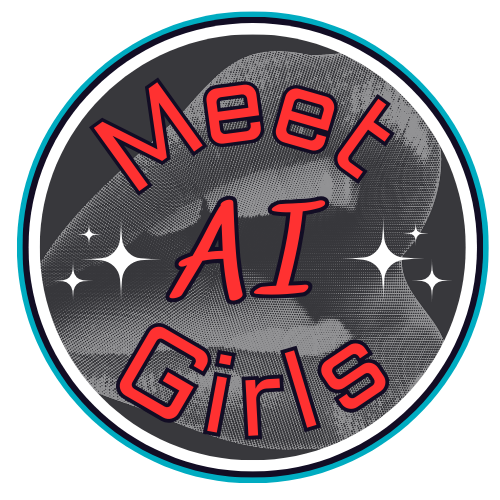AI chatbots have revolutionized the way we interact and communicate, transforming relationships across various industries. With their ability to simulate human conversation and understand user questions, these chatbots have become invaluable tools in enhancing customer service, personalizing user experiences, and streamlining communication processes.
Powered by artificial intelligence and natural language processing technologies, AI chatbots are able to analyze and interpret user input, providing relevant and accurate responses in real-time. They have the potential to automate tasks, provide 24/7 support, and revolutionize the way businesses interact with their customers.

In this blog, we will explore the various ways in which AI chatbots are revolutionizing relationships in different sectors. From improving customer service with 24/7 support to innovating education with interactive learning tools, AI chatbots are transforming the way we communicate and connect.
We will also delve into the mechanics behind AI chatbots, understanding how they learn and evolve through natural language processing and machine learning algorithms. By understanding the technology behind these chatbots, we can better grasp their potential and the impact they can have on our daily lives.
Join us as we explore the exciting world of AI chatbots and discover how they are revolutionizing relationships across industries. Let’s dive in and explore the many ways in which AI chatbots are transforming the way we interact and communicate.
Transforming Interactions: How AI Chatbots Are Revolutionizing Relationships
AI chatbots are revolutionizing relationships across various industries, transforming the way we interact and communicate. These chatbots, powered by artificial intelligence and natural language processing, are able to simulate human conversation and understand user questions. With their ability to automate tasks, provide 24/7 support, and personalize user experiences, AI chatbots are revolutionizing customer service, virtual assistants, and the way businesses connect with their customers. The impact of AI chatbots is far-reaching, extending to sectors such as healthcare, education, retail, finance, accessibility, and mental health support. AI chatbots are also transforming interactions by supporting and enhancing the work of human agents at call centers, allowing them to focus on more complex tasks and providing a seamless and efficient customer experience. Let’s explore how AI chatbots are revolutionizing relationships in these sectors and beyond.
1. Enhancing Customer Service with 24/7 Support
AI chatbots are revolutionizing customer service by providing 24/7 support and enhancing the overall customer experience. With their ability to analyze and interpret user queries, AI chatbots can provide instant responses to customer questions, reducing waiting times and improving efficiency.
By automating repetitive tasks and handling common customer inquiries, AI chatbots free up human customer service agents to focus on more complex issues. This not only improves response times but also allows businesses to provide round-the-clock support without the need for additional staff.
Furthermore, AI chatbots can personalize the customer service experience by leveraging customer data and previous interactions. They can remember customer preferences, provide tailored recommendations, and offer personalized assistance, creating a more engaging and satisfying experience for customers.
Overall, AI chatbots are revolutionizing customer service by providing faster, more efficient, and personalized support, ultimately enhancing the relationship between businesses and their customers.
2. Personalizing User Experiences Through Learning Algorithms
One of the key ways AI chatbots are revolutionizing relationships is through personalizing user experiences. By leveraging machine learning algorithms, these chatbots can continuously learn from user interactions and tailor their responses to meet individual needs.
Machine learning allows AI chatbots to analyze user preferences, behaviors, and patterns, enabling them to provide personalized recommendations, suggestions, and solutions. Whether it’s suggesting products based on previous purchases or offering customized content based on user preferences, AI chatbots can create personalized experiences that enhance user satisfaction and engagement.
Through continuous learning and adaptation, AI chatbots can also improve conversation flow and understand user intents more accurately over time. This not only enhances the user experience but also strengthens the relationship between users and AI chatbots, creating a more personalized and human-like interaction.
By personalizing user experiences, AI chatbots are revolutionizing the way businesses connect with their customers, providing tailored solutions and enhancing overall satisfaction.
3. Streamlining Communication in Healthcare for Better Patient Care
AI chatbots are revolutionizing communication in the healthcare industry, improving patient care and efficiency. These chatbots can automate tasks such as appointment scheduling, medication reminders, and providing basic medical information, reducing the burden on healthcare professionals and streamlining administrative processes.
By providing 24/7 support and instant responses to patient queries, AI chatbots can enhance the patient experience, providing timely and accurate information. They can also offer personalized health recommendations based on individual medical history and symptoms, helping patients make informed decisions about their health.
In addition to improving patient care, AI chatbots in healthcare can also assist healthcare professionals by providing access to relevant research, treatment guidelines, and medical databases. This enables healthcare professionals to make more informed decisions and provide better care to their patients.
Overall, AI chatbots are revolutionizing communication in healthcare, improving patient care, and facilitating better collaboration between patients and healthcare professionals.
4. Innovating Education with Interactive Learning Tools
AI chatbots are revolutionizing education by providing interactive learning tools and personalized support to students. These chatbots can assist students in their learning journey by answering questions, providing explanations, and offering additional resources.
By leveraging natural language processing and machine learning algorithms, AI chatbots can understand student queries and provide tailored responses and guidance. They can adapt to individual learning styles and preferences, offering personalized recommendations and adaptive learning experiences.
AI chatbots in education can also provide feedback and assessments, helping students track their progress and identify areas for improvement. They can create interactive learning experiences, offering simulations, quizzes, and interactive content that enhance engagement and retention.
Through their ability to provide personalized support, interactive learning tools, and adaptive experiences, AI chatbots are revolutionizing education, making learning more accessible, engaging, and effective.
5. Building Stronger Connections in Personal Relationships
AI chatbots are revolutionizing personal relationships by enhancing communication and connection. In the age of social media, AI chatbots can act as personalized virtual assistants, helping individuals manage their online presence, interact with others, and build stronger connections.
By analyzing social media data and user preferences, AI chatbots can curate personalized content and recommendations, helping individuals stay connected with their friends, family, and communities. They can offer suggestions for social activities, events, and interests based on individual preferences, enhancing social interactions and connection.
Furthermore, AI chatbots can provide emotional support and companionship, offering a safe space for individuals to express their thoughts and feelings. They can simulate human conversation and offer empathy, fostering a sense of connection and well-being.
Overall, AI chatbots are revolutionizing personal relationships by leveraging social media and personalization to enhance communication, connection, and emotional support.
6. Facilitating Seamless Workplace Collaboration
AI chatbots are revolutionizing workplace collaboration by facilitating seamless communication and teamwork. These chatbots can act as virtual assistants, helping employees manage their tasks, schedules, and projects.
By automating repetitive and administrative tasks, AI chatbots free up time for employees to focus on more important and strategic work. They can schedule meetings, send reminders, and provide updates, streamlining communication processes and improving efficiency.
AI chatbots can also facilitate collaboration by offering real-time collaboration tools, such as shared documents, task management systems, and project tracking. They can integrate with existing workplace software and systems, providing a centralized hub for communication and collaboration.
Through their ability to automate tasks, streamline communication, and provide collaborative tools, AI chatbots are revolutionizing workplace collaboration, fostering teamwork and productivity.
7. Empowering Retail with Customized Shopping Assistants
AI chatbots are revolutionizing the retail industry by empowering customers with customized shopping assistants. These chatbots can interact with customers, understand their preferences, and provide personalized product recommendations.
By analyzing customer data and purchase history, AI chatbots can offer tailored suggestions, helping customers find the products that best match their needs and preferences. They can provide real-time inventory information, pricing details, and product comparisons, enhancing the shopping experience.
AI chatbots can also assist with customer support, answering questions about products, shipping, and returns. They can provide instant assistance, reducing the need for customers to wait for human support.
Through their ability to provide personalized shopping experiences, offer real-time assistance, and streamline the purchasing process, AI chatbots are revolutionizing the retail industry, improving customer satisfaction and driving sales.
8. Revolutionizing Financial Advice with AI-Powered Chatbots
AI chatbots are revolutionizing the financial industry by providing personalized and accessible financial advice. These chatbots can analyze financial data, provide recommendations, and assist with investment decisions.
By leveraging machine learning algorithms, AI chatbots can analyze market trends, financial news, and individual financial goals to offer tailored advice. They can provide real-time portfolio updates, suggest investment strategies, and monitor financial performance.
AI-powered chatbots can also assist with financial planning, budgeting, and retirement savings. They can offer personalized recommendations based on individual financial situations and goals, helping individuals make informed decisions.
Through their ability to provide personalized financial advice, AI-powered chatbots are revolutionizing the financial industry, making financial guidance more accessible, efficient, and tailored to individual needs.
9. Enhancing Accessibility for Disabled Users Through Voice Commands
AI chatbots are revolutionizing accessibility for disabled users by providing support through voice commands. These chatbots can assist individuals with disabilities by understanding and responding to voice inputs, eliminating the need for manual interaction.
By leveraging natural language processing and voice recognition technologies, AI chatbots can interpret voice commands and provide appropriate responses. They can assist with tasks such as controlling smart devices, accessing information, and performing daily tasks.
For individuals with mobility impairments or visual impairments, AI chatbots with voice command capabilities offer a more accessible and independent way to interact with technology and access information. They can provide support and assistance in real-time, enhancing accessibility and inclusion.
Through their ability to understand and respond to voice commands, AI chatbots are revolutionizing accessibility for disabled users, empowering individuals with disabilities to navigate and interact with technology more effectively.
10. Providing Mental Health Support with Empathy and Anonymity
AI chatbots are revolutionizing mental health support by providing empathetic and anonymous assistance. These chatbots can offer a safe and non-judgmental space for individuals to express their thoughts and feelings, providing emotional support and guidance.
By leveraging natural language processing and machine learning algorithms, AI chatbots can understand and interpret user inputs, offering personalized responses and recommendations. They can provide coping strategies, self-help resources, and suggestions for seeking professional help.
For individuals who may be hesitant to seek traditional mental health support, AI chatbots offer a convenient and accessible alternative. They can provide support anytime and anywhere, reducing barriers to mental health care and promoting emotional well-being.
Through their ability to provide empathetic and anonymous mental health support, AI chatbots are revolutionizing the way individuals access and receive mental health care, improving accessibility and destigmatizing mental health.
The Mechanics Behind AI Chatbots: How They Learn and Evolve
To understand the mechanics behind AI chatbots, we must delve into the technologies that power them: natural language processing, machine learning, and emotional intelligence.
Natural language processing (NLP) enables AI chatbots to analyze and interpret user input, allowing them to understand and respond to queries in a human-like manner. This technology allows chatbots to process language, context, and intent, enabling more accurate and meaningful interactions.
Machine learning algorithms play a crucial role in the learning and evolution of AI chatbots. By analyzing past interactions and user data, these algorithms continuously learn and improve, adapting their responses and conversation flow over time.
Emotional intelligence is another important aspect of AI chatbots. By incorporating emotional cues and responses in their interactions, chatbots can provide a more empathetic and human-like experience, fostering a stronger connection with users.
Through the integration of natural language processing, machine learning, and emotional intelligence, AI chatbots are able to learn, adapt, and provide more intelligent and engaging conversations.
Understanding Natural Language Processing (NLP)
Natural Language Processing (NLP) is a branch of artificial intelligence that focuses the interaction between computers and human language. NLP enables computers to understand, interpret, and respond to natural language, enabling more human-like interactions.
NLP algorithms analyze the structure and meaning of language, allowing computers to parse and interpret user input. These algorithms break down sentences, extract meaningful information, and identify patterns, enabling computers to understand the intent and context of user queries.
With the advancements in NLP, AI chatbots are able to process and interpret user questions, generate appropriate responses, and engage in meaningful conversations. They can understand nuances, handle complex queries, and provide accurate information to users.
NLP is a key technology in AI chatbots, enabling them to revolutionize relationships by understanding and responding to user input in a more human-like manner. By leveraging NLP, AI chatbots can provide personalized and efficient interactions, enhancing the overall user experience.
The Role of Machine Learning in Chatbot Evolution
Machine learning has played a crucial role in the evolution of chatbots. Traditional chatbots relied on pre-programmed answers to specific questions, limiting their ability to handle complex queries or understand natural language. However, machine learning algorithms have enabled chatbots to learn from past interactions and improve their response accuracy.
By training chatbots on large datasets, they can analyze and understand patterns in human language, allowing them to generate more accurate and contextually relevant responses. Machine learning algorithms also enable chatbots to adapt and improve over time, as they learn from user interactions and feedback.
This evolution in chatbot technology has led to the development of more advanced chatbots with generative AI capabilities. These chatbots can understand common language, adapt to an end user’s conversation style, and even use empathy when responding to users’ questions. As machine learning continues to advance, chatbots will become even more intelligent and capable of providing personalized and human-like interactions.
Integrating Emotional Intelligence into AI Chatbots
Integrating emotional intelligence into AI chatbots is a significant development in the field of natural language processing. Emotional intelligence refers to the ability to recognize, understand, and respond to human emotions effectively. By incorporating emotional intelligence into AI chatbots, they can provide more empathetic and personalized interactions with users.
Emotional AI chatbots can analyze the emotional cues from user input and respond accordingly, taking into account the user’s emotional state. For example, if a user expresses frustration or sadness, the chatbot can respond with empathy and offer support or solutions to the user’s problem.
This integration of emotional intelligence has the potential to revolutionize customer service and user experience. AI chatbots can now provide emotional support, guidance, and personalized recommendations, making interactions more meaningful and improving customer satisfaction.
Case Studies: Successful Implementations of AI Chatbots in Various Sectors
AI chatbots have been successfully implemented in various sectors, revolutionizing customer service, patient interaction, online education, and e-commerce.
In the banking industry, AI chatbots have improved customer satisfaction by providing instant responses to queries, assisting with banking transactions, and offering personalized financial advice.
In telemedicine, AI chatbots have transformed patient interaction by providing 24/7 support, appointment scheduling, and health-related information. Patients can receive immediate assistance and access healthcare resources without the need for human intervention.
In online education, AI chatbots have enhanced learning outcomes by offering personalized learning experiences, providing instant feedback, and assisting students in their educational journey.
In the e-commerce industry, AI chatbots have boosted sales by offering personalized product recommendations, assisting customers with their purchase decisions, and providing a seamless shopping experience.
These case studies highlight the successful implementation of AI chatbots in various sectors and demonstrate their potential to revolutionize customer interactions and improve business outcomes.
Improving Customer Satisfaction in the Banking Industry
The banking industry has witnessed a significant improvement in customer satisfaction with the implementation of AI chatbots. AI chatbots have revolutionized customer service by providing instant responses to customer queries and offering personalized assistance.
Customers can now receive immediate support for their banking transactions, such as balance inquiries, fund transfers, and bill payments, without the need for human intervention. This has significantly reduced the waiting time for customer support, leading to higher customer satisfaction.
AI chatbots in the banking industry can also provide personalized financial advice based on the customer’s transaction history and spending patterns. By analyzing customer data, chatbots can offer tailored recommendations for saving, investing, and managing finances.
Furthermore, AI chatbots can assist customers in navigating complex banking processes, such as applying for loans or opening new accounts. They can guide customers through the necessary steps, answer questions, and provide relevant information, ensuring a seamless and user-friendly experience.
Overall, AI chatbots have transformed customer service in the banking industry, improving customer satisfaction and enhancing the overall banking experience for customers.
Innovating Patient Interaction in Telemedicine
Telemedicine has experienced a significant transformation in patient interaction with the integration of AI chatbots. AI chatbots have revolutionized the way patients interact with healthcare providers, offering 24/7 support, appointment scheduling, and health-related information.
AI chatbots can provide instant responses to patient queries, helping them access healthcare resources, receive medical advice, and find relevant information about diseases, symptoms, and treatments. Patients no longer have to wait for a human operator or healthcare professional to be available to address their concerns.
Additionally, AI chatbots can assist in appointment scheduling by offering available time slots, reminding patients about upcoming appointments, and even rescheduling or canceling appointments. This ensures efficient and timely access to healthcare services.
Moreover, AI chatbots can provide personalized health recommendations based on the patient’s medical history, symptoms, and lifestyle. They can offer suggestions for preventive care, healthy habits, and self-management techniques, empowering patients to take control of their health.
The integration of AI chatbots in telemedicine has improved patient engagement, accessibility, and convenience, enhancing the overall patient experience.
Enhancing Learning Outcomes in Online Education
Online education has witnessed a significant enhancement in learning outcomes with the integration of AI chatbots. AI chatbots have transformed the way students learn and interact with educational content, offering personalized learning experiences and instant feedback.
AI chatbots can provide personalized recommendations on educational resources, such as books, articles, and videos, based on the student’s learning style, interests, and academic goals. This ensures that students have access to relevant and engaging materials that cater to their individual needs.
Furthermore, AI chatbots can assist students in understanding complex concepts by providing explanations, examples, and additional resources. They can answer questions in real-time, eliminating the need to wait for a teacher or instructor’s response.
Additionally, AI chatbots can provide instant feedback on assignments, quizzes, and exams, allowing students to track their progress and identify areas for improvement. This timely feedback promotes active learning and helps students stay engaged and motivated.
By enhancing learning outcomes in online education, AI chatbots have revolutionized the way students learn, making education more personalized, interactive, and effective.
Boosting Sales Through Personalized Recommendations in E-Commerce
E-commerce has experienced a significant boost in sales with the integration of AI chatbots that offer personalized recommendations. AI chatbots can analyze customer data, such as purchase history, browsing behavior, and preferences, to provide tailored product suggestions.
By offering personalized recommendations, AI chatbots can assist customers in finding products that align with their interests, style, and needs. This increases the chances of customers making a purchase and enhances the overall shopping experience.
Moreover, AI chatbots can answer customer queries regarding product specifications, availability, and pricing, providing instant assistance and guiding customers through the purchase process. This reduces customer frustration and increases the likelihood of completing a sale.
AI chatbots can also offer cross-selling and upselling recommendations, suggesting related or complementary products to customers based on their current selection. This not only increases sales revenue but also enhances customer satisfaction by offering a personalized and curated shopping experience.
By leveraging the power of personalized recommendations, AI chatbots have revolutionized sales in the e-commerce industry, driving customer engagement, and improving business outcomes.
Ethical Considerations and Privacy Concerns
The integration of AI chatbots raises important ethical considerations and privacy concerns. As AI chatbots interact with users and process their data, it is crucial to ensure data privacy and address potential ethical dilemmas.
Privacy concerns arise from the collection, storage, and usage of user data by AI chatbots. It is essential to have robust data privacy policies in place to protect user information from unauthorized access or misuse. Data encryption, secure storage, and strict access controls are some measures that can be implemented to safeguard user privacy.
Ethical considerations include issues like the transparency of AI chatbot capabilities and limitations, the fair treatment of users, and the potential for bias in automated decision-making. It is important to ensure that AI chatbots are designed and trained to provide accurate and unbiased information, without favoring any particular group or individual.
Furthermore, obtaining informed consent from users regarding data collection and usage is crucial to maintain transparency and respect user autonomy. Users should have control over their personal data and the option to opt-out or delete their information when desired.
By addressing ethical considerations and privacy concerns, organizations can ensure the responsible and ethical use of AI chatbot technology, building trust with users and maintaining their privacy.
Navigating Data Privacy in Conversations with AI
Data privacy is a critical consideration when engaging in conversations with AI chatbots. As AI chatbots process user data, it is essential to navigate data privacy to protect sensitive information and respect user privacy rights.
To ensure data privacy, AI chatbots should employ encryption techniques to protect data transmission and storage. This prevents unauthorized access and secures user information from potential cyber threats.
Additionally, user consent is crucial when collecting and using personal data. AI chatbots should clearly inform users about data collection practices and provide options for users to control the collection and usage of their data. This includes the ability to opt-out, delete data, and access their data.
Organizations should also implement strict access controls and data anonymization techniques to minimize the risk of data breaches and protect user privacy. By anonymizing data, personal identifiers are removed, ensuring that user information cannot be linked back to individuals.
Navigating data privacy in conversations with AI chatbots is essential to build trust with users and demonstrate a commitment to protecting their privacy and personal information.
Addressing Ethical Dilemmas in Chatbot Design
The design of AI chatbots raises important ethical dilemmas that must be addressed to ensure responsible and ethical use of the technology.
One ethical dilemma is the potential for chatbots to generate misleading or incorrect information. AI chatbots are trained on large datasets and may generate responses based on patterns in the data, even if the information is inaccurate or biased. It is crucial to ensure that chatbots are designed to provide accurate, reliable, and unbiased information.
Another ethical dilemma is the potential for chatbots to exhibit biased behavior or discriminatory responses. If chatbots are trained on biased or incomplete datasets, they may unintentionally perpetuate biases or discriminate against certain individuals or groups. It is important to train chatbots on diverse and representative datasets to mitigate bias and ensure fair treatment.
Furthermore, transparency and disclosure are essential ethical considerations in chatbot design. Users should be informed that they are interacting with a chatbot and understand the limitations and capabilities of the technology. Clear communication and transparency in chatbot interactions can help manage user expectations and avoid potential ethical conflicts.
By addressing these ethical dilemmas in chatbot design, organizations can ensure that chatbots are designed and deployed responsibly, promoting fairness, accuracy, and transparency in user interactions.
Future Trends: What’s Next for AI Chatbots?
The future of AI chatbots looks promising, with several trends on the horizon. Advancements in conversational AI technologies will continue to enhance the capabilities of chatbots, making them even more intelligent and capable of human-like interactions.
Conversational AI technologies will focus on improving natural language understanding and generation, enabling chatbots to understand and respond to user queries with greater accuracy and fluency. This will result in more seamless and engaging conversations between users and chatbots.
Additionally, chatbots will their capabilities beyond text-based interactions. They will incorporate voice recognition and voice synthesis technologies, enabling users to interact with chatbots through voice commands and receiving responses in natural-sounding voices.
Moreover, the rise of multilingual chatbots will enable global reach and cater to a diverse range of users. Multilingual chatbots will be able to understand and respond to user queries in multiple languages, breaking down language barriers and providing inclusive and accessible user experiences.
These future trends in conversational AI technologies will further revolutionize the capabilities and applications of AI chatbots, transforming the way we interact with technology and improving user experiences.
Advancements in Conversational AI Technologies
Advancements in conversational AI technologies are driving the continuous improvement and evolution of AI chatbots. These advancements are focused on enhancing natural language understanding, generation, and user interaction.
Natural language understanding (NLU) algorithms are improving, allowing chatbots to comprehend user queries more accurately, even with variations in language, grammar, and context. This enables chatbots to provide more relevant and personalized responses to user questions.
Conversational AI technologies are also advancing natural language generation (NLG), enabling chatbots to generate human-like responses that are contextually relevant and coherent. NLG advancements include sophisticated language models that improve the fluency and coherence of chatbot responses.
Additionally, advancements in user interaction are enabling chatbots to engage users in more interactive and dynamic conversations. This includes features like context tracking, memory, and understanding of user preferences, allowing chatbots to remember past interactions and provide a more personalized user experience.
These advancements in conversational AI technologies are driving the continuous improvement of AI chatbots, making them more intelligent, responsive, and capable of providing seamless user interactions.
Expanding the Capabilities of AI Chatbots Beyond Text
The capabilities of AI chatbots are expanding beyond text-based interactions, allowing for more versatile and immersive user experiences. AI chatbots are incorporating voice recognition and voice synthesis technologies, enabling users to interact with chatbots through voice commands and receive responses in natural-sounding voices.
Voice-enabled chatbots offer a more intuitive and convenient user interface, allowing users to interact with technology hands-free and with greater ease. Users can ask questions, make requests, and receive instant responses, mimicking a conversation with a human.
Furthermore, chatbots are incorporating visual elements, such as images, videos, and interactive interfaces, to enhance user interactions. Visual chatbots can provide product demonstrations, visual instructions, and interactive features that engage users and make interactions more informative and engaging.
By expanding the capabilities of AI chatbots beyond text, organizations can provide users with a more immersive and interactive experience, improving user engagement, and satisfaction.
The Rise of Multilingual Chatbots for Global Reach
The rise of multilingual chatbots is enabling global reach and breaking down language barriers in user interactions. Multilingual chatbots can understand and respond to user queries in multiple languages, providing inclusive and accessible user experiences.
These chatbots use natural language processing and machine translation techniques to comprehend and generate responses in different languages. They can accurately understand user queries in their preferred language and provide responses in the same language, ensuring clear communication and reducing language barriers.
Multilingual chatbots cater to a diverse range of users and extend the reach of organizations to global audiences. They enable businesses to provide support, assistance, and personalized experiences to users regardless of their language preferences.
The rise of multilingual chatbots is transforming user interactions and enabling businesses to connect with global audiences, driving growth and expanding market opportunities.
AI chatbots are revolutionizing relationships by enhancing customer service, personalizing experiences, and improving communication across various sectors. With advancements in NLP and machine learning, chatbots now offer empathetic interactions and tailored assistance. However, ethical considerations like data privacy and design dilemmas must be addressed. The future holds exciting trends such as multilingual capabilities and expanded AI functionalities, making it crucial to follow best practices when selecting a chatbot platform. Businesses can integrate chatbots strategically to boost customer relationships and streamline operations effectively. Embracing these innovations will undoubtedly shape the future of interactions in diverse industries.















